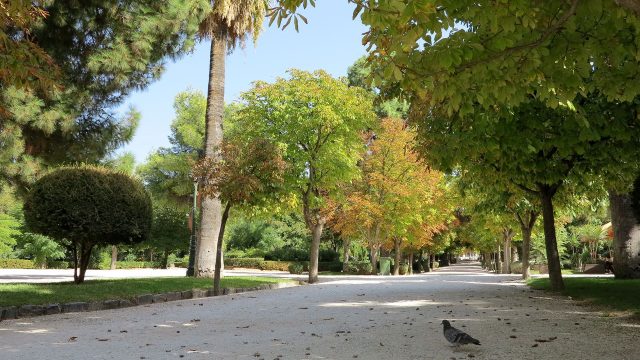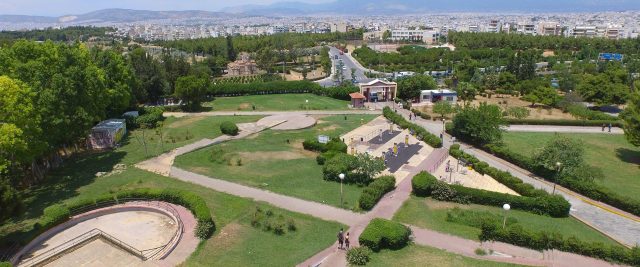Leave behind the clamour of Athens and spend a day at southeastern Europe’s largest botanical gardens. Located in the western suburb of Chaidari, the gardens are beautifully ordered and feature numerous exotic flora.
Alexandros Diomedis founded the garden with the University of Athens in the 1950s on land contributed by the Ministry of Agriculture. The design was based on plans by university professor H. Hammerbacher. The gardens opened to the public in 1975.
The gardens’ gates open on another world. An area of 460 acres is filled with water-lily-covered ponds and shaded paths, and is home to 2,500 species of plants. Polish up on your Latin and Greek, as you study the name of each variety – or simply relax and explore nature in all its splendour.
The Diomedes Botanical Gardens are a unique ecosystem housing both wild and cultivated species (organized by geography and theme). A historical plants section offers up species mentioned in Greek mythology and the Old Testament, such as the laurel dedicated to Apollo (Laurus nobilis), the ivy dedicated to Dionysus (Hedera helix) and the narthex (Ferula communis), the giant fennel stalk in which Prometheus hid fire stolen from Zeus.
You’ll also find poison hemlock (Conium maculatum) used for Socrates’ execution and acanthus (Acanthus spp.) which inspired Corinthian-style capitals. Christianity is well represented: the plant used to make Jesus’ crown of thorns (Paliurus aculeatus) and the flower that the angel handed to the Madonna (Lilium candidum).
Continue your walk in the Anthonas section, where you’ll encounter climbing plants, aromatic herbs and, stunning rose bushes. This is perhaps the Gardens’ most impressive section as it changes colours with every season. Anthonas’ 25 ponds are beautifully arrayed throughout the grounds.
After a cooling stroll along the bamboo path, visit the section on plants and economy, where you’ll find species that contribute to the world of modern commerce: fruits, vegetables, wood, fabrics, pigments, resins, scents and spices. Don’t miss the Egyptian lotus pond; as you’ll learn, it’s a misnomer, since the lotus originated in Asia.
Among the medicinal plants, you’ll find aloe, balsam, ginger, lavender and rosemary. In the nearby nursery and greenhouse, you’ll find sugar cane, pepper, cacti and endangered species.
To the right of the main entrance is the Dendronas garden. It is divided into six sections and features trees from all over the world: olive trees, acacias, cedars, coconut trees, eucalyptus and Japanese Beautyberry (Callicarpa japonica) to name a few.
The Herbarium includes 19,000 dried plant samples, most from protected areas belonging to the NATURA 2000 network. The Diomedes Botanical Gardens are a member of the Botanical Gardens Conservation International (BGCI).
Need a break? The benches dotting the gardens are an ideal place to kick back and relax.
Perfect for nature lovers and inquiring minds, the Diomedes Botanical Gardens are a must-see for visitors young and old.
Location: 430 Iera Odos, Chaidari (8 km from central Athens)
Access: Buses A16 (Koumoundourou Square-Elefsina), Γ16 (Koumoundourou Square-Aspropyrgos), 811 (Haidari – Ag. Marina Metro Station). Or take buses 801, 836, 845, 866 and 876. Access to all buses is from Iera Odos (Diomedes stop) or Leoforos Athinon (Psychiatreio stop).
Note: Cars, motorbikes, bicycles and pets are not permitted in the gardens. Ball games strictly forbidden. Children under 14 years old must be escorted at all times.
Guided tours: Specialists conduct tours from Monday to Friday, by prior arrangement. Call the Diomidous Botanical Gardens at 210-5811557.
Site: http://www.diomedes-bg.uoa.gr/start-en.html









